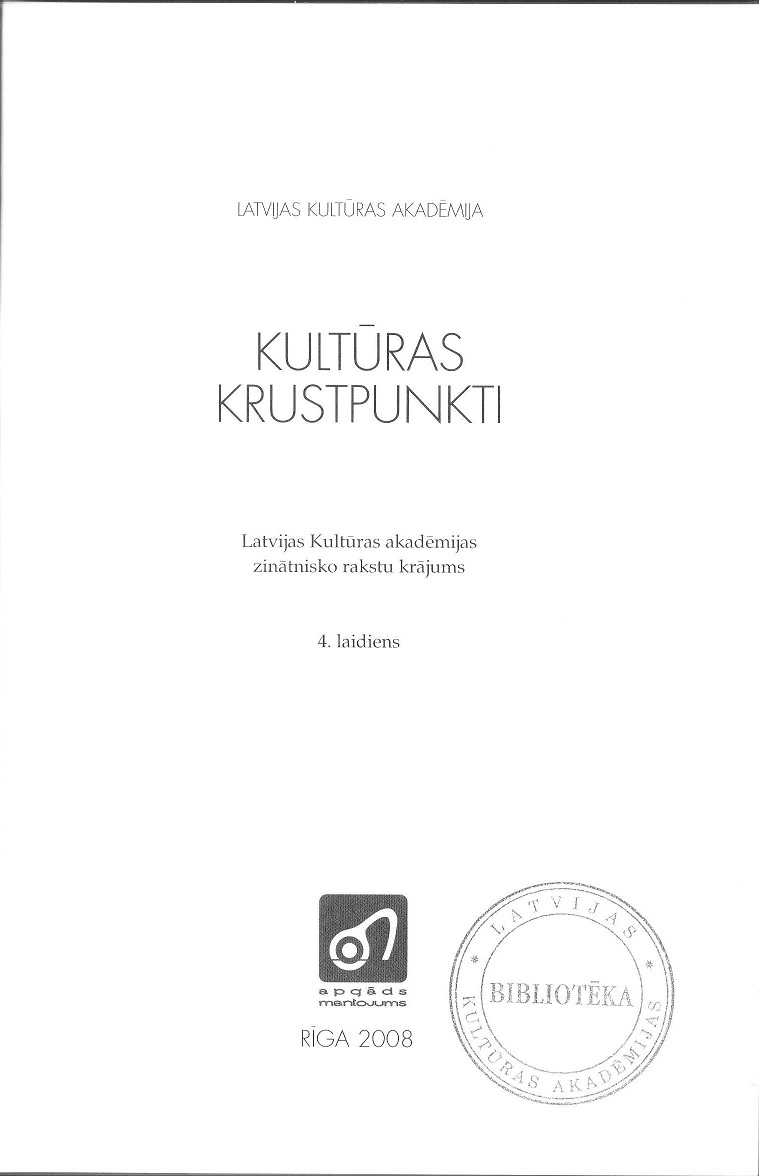Slagūnes Cibēnu senvietas. Aizmirstā meklējumos
The Ancient Sites of Slagūnes Cibēni. In Search of the Forgotten
Author(s): Juris UrtānsSubject(s): Archaeology, Cultural history, Customs / Folklore, Ethnohistory, Local History / Microhistory, Ancient World, Cultural Anthropology / Ethnology
Published by: Latvijas Kultūras akadēmija
Keywords: Slagūnes Cibēni; ancient sites; archaeology; Cepures Hill; barrows; artifacts; burial sites; culture;
Summary/Abstract: On 3 May 2001, aerial reconnaissance was undertaken of the site of the Slagūnes Cibēnu Cepures Hill (Annenieki Parish of the Dobele District). Several concentric grass marks were observed in a field next to Cepures Hill, coresponding in size to Early Iron Age barrows. In an attempt to identify the marks, archival research was undertaken, literary information was collected and the archaeological sites at Cibēni (Cepures Hill, Ozolkalns, Elkus Hill, the cemeteries at Mantas Hill, Ozolkalns and Lake Balziens) were visited. The earliest known account of the ancient sites around Cibēni was recorded by J. Doring in 1868. At that time, a barrow was also excavated. Artefacts excavated in 1867 at Mantas Hill also ended up in repositories of artefacts. In 1869, the ancient sites were described by A.Bielenstein, focussing on Cepures Hill. He suggested that Cepures Hill was the site of the castle of Babote, men-lioned in 1279. Most subsequent researchers did not support this hypothesis. Both researchers also left comprehensive descriptions of Elkus Hill. Later, in l he 19th and 20th centuries, the ancient sites of Cibēni were frequently mentioned in a variety of publications. Today it is possible to identify all of the ancient sites at Cibēni listed since the middle of the 19th century. The concentration of sites in this area is the reason why they have been confused in several publications (confusion between Cepures Hill and Mantas Hill, the cemeteries of Ozolkalns and Cepures Hill). The area around Slagūnes Cibēni was evidently an important centre in the ancient past, marked by several burial sites dating from the Early and Middle Iron Age, as were the sites of Cibēnu Cepures Hill, which requires furthoi study, and the adjacent hill, Elkus (Idol) Hill, the name of which may indicalc a sacred role. The grass marks seen in the aerial photographs turned out to be of natural origin - they had come about as a result of fungal growth. At the presenl level of development of aerial archaeology in Latvia, we still have to determine the kinds of archaeological realities that are visible from the sky and identify the kinds of grass, crop and soil marks and other features that indicate their presence. The attempt to interpret the marks observed at Cibēni has focussed attention on the ancient sites of the Cibēni area as part of the present-day cultural landscape.
Journal: Culture Crossroads
- Issue Year: 4/2008
- Issue No: 1
- Page Range: 169-184
- Page Count: 16
- Language: Latvian

